Imagine taking a 20-day, 157-mile horseback trip through Yellowstone National Park.
Author and former Eaton Brothers Ranch cowboy Don DeJarnett enthralled a group of listeners recently at the Yellowstone Gateway Museum in Livingston with the details of just such a trip.
From about the early 1900s to 1922, Howard Eaton—who was a real person for whom several trails in the park are still named—led one to two trips each summer through Yellowstone for “dudes” who were guests of his ranch outside of Wolf, Wyoming, located east of the park.
Eaton would send his guests by train north and then west via railroad to Gardiner, where he and his crew would meet them. Eaton either shipped his seven or eight wagons plus cooking and camping gear by train or sent them overland, DeJarnett said, enough gear to outfit, feed and shelter up to 40 or 50 dudes for three weeks.
“I got interested in the logistics,” DeJarnett said, and decided to write an article. During the course of his research, his article turned into a book.
DeJarnett (seen above) worked for the Eaton Brothers Ranch when he was a young man in the 1950s. The park tours had ceased after Howard Eaton’s death in 1922, but the ranch is still an operating dude ranch to this day.
DeJarnett went on to later work for newspapers in the region. Now retired, he spent some time working on his book after losing his wife of more than 50 years in 2010, he said.
DeJarnett’s book follows the trail Howard Eaton carved out of the Yellowstone wilderness as if the reader is on a modern-day tour on the trail.
Some but not all sections of the trail are still visible and used. Probably the best-known section lies on the east side of the Yellowstone River through Hayden Valley, stretching from Fishing Bridge to the South Rim of the Grand Canyon of the Yellowstone, today bout a 14.5 mile day hike.
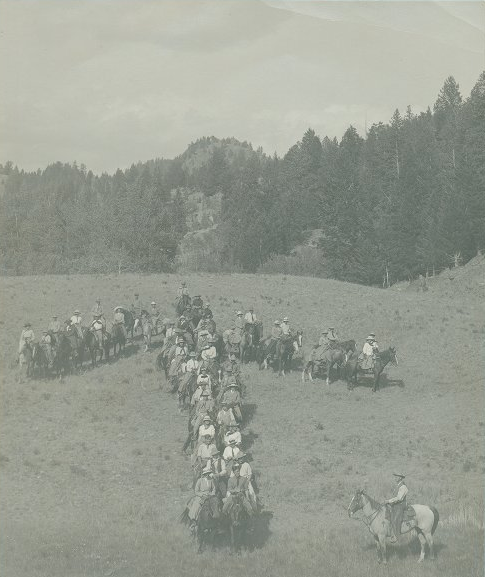
Eaton took his dudes to all of the park’s major attractions, from Mammoth Hot Springs south all the way to within view of the Tetons, then back up and around Yellowstone Lake to the Grand Canyon, north to Tower and Slough Creek and then back to Mammoth. The ranch crew set up each camp, including a dining tent and canvas tipis for the dudes to sleep in.
Guests were carefully matched to a horse that would be theirs for the entire trip. There was always space on a wagon for any dude who needed a break from riding.
Paul Shea, the Yellowstone Gateway Museum’s executive director, said the museum has documentation that states the crew had a special name for the wagons guests rode in, a phrase they were very careful to keep from their guests – the “sore-ass wagon,” he announced, to appreciative chuckles from the audience.
Eaton, known as a jack-of-all-trades, always made sure his guests had a good time.
There was a large bonfire each evening, with cowboy tales, songs and skits, DeJarnett said. Eaton was known to dress every day in a white shirt, tie and a vest, he added.
The trail mostly paralleled the main roads, which are pretty much the same roads we travel today. Eaton stayed off the main roads because in his day, they were dirt roads heavily traveled by stagecoaches, and they were rough and dusty.
The tours discontinued after Eaton’s sudden death in 1922. In 1923, the park named the trails in his honor, installing a sign at Sheepeater Cliffs, south of Mammoth, in 1923. Park officials gathered and had a photograph taken to mark the dedication.
In the photo, seen above, the people are, left to right, Horace Albright, the park’s first NPS superintendent; Stephen Mather first director of the NPS; Willis and Alder Easton, Howard’s brothers; and Jack Haynes, an early park photographer, DeJarnett said.
Eaton was born in Pittsburgh in 1847. His father ran a clothing store. There was a depression in 1878, so Howard headed west. He got a job in North Dakota furnishing game for the railroad workers. He was later a cattle baron, and owned a ranch outside of Medora, North Dakota, not far from a ranch owned by Teddy Roosevelt, with whom he formed a lifelong friendship.
He later moved to Wyoming and bought the ranch that still operates. He was issued his first permits for his trips to Yellowstone in 1906.
DeJarnett’s book is Cowboy Tales on the Eaton Trail in Yellowstone, and it’s published by Pronghorn Press of Greybull, Wyoming.
 Yellowstone Insider Your Complete Guide to America's First National Park
Yellowstone Insider Your Complete Guide to America's First National Park
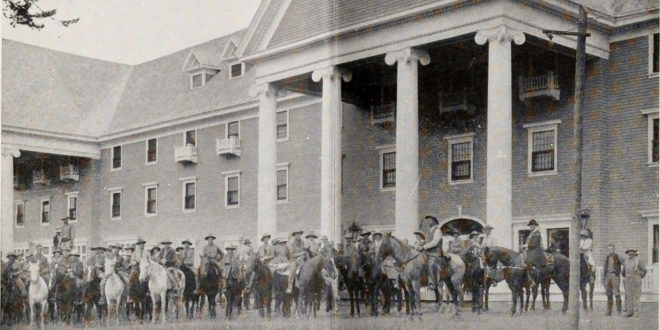
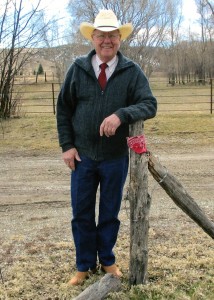
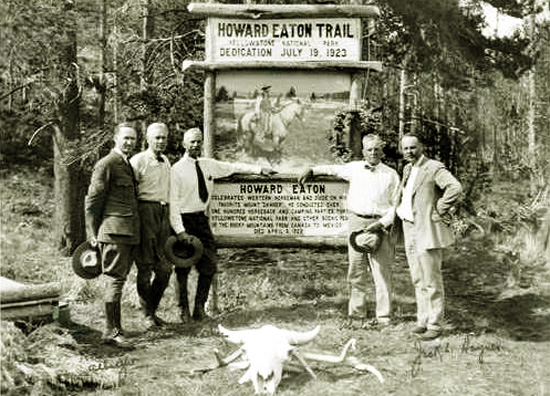




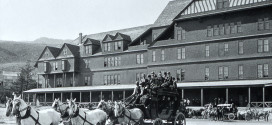
You must be logged in to post a comment.